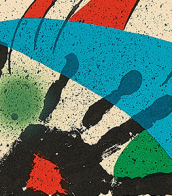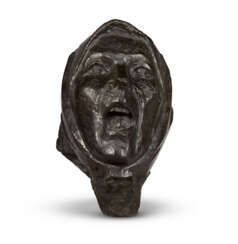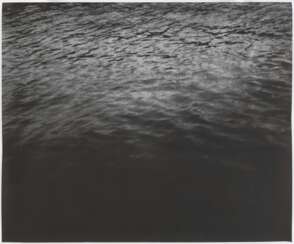gon

Egon Leo Adolf Ludwig Schiele, an Austrian Expressionist painter, is a figure whose work stands out for its raw intensity and exploration of sexuality, including a remarkable series of self-portraits that often featured nudity. Born in 1890 in Tulln, Lower Austria, Schiele's early life was marked by a fascination with trains and a troubled relationship with his family, especially following his father's death from syphilis when Schiele was just 15 years old. This event propelled him into the care of his uncle, who recognized Schiele's artistic talent despite his lack of interest in traditional academia, leading to Schiele's education at the Vienna Academy of Fine Arts.
Schiele's artistic journey was deeply influenced by his mentor Gustav Klimt, who introduced him to the Vienna Secession and the Wiener Werkstätte, enriching his art with elements of Art Nouveau and paving the way for his distinct style that evolved beyond the influence of his mentor. Schiele's art, characterized by its emotional and sexual honesty, utilized figural distortion to challenge conventional ideals of beauty, making his work groundbreaking for its time.
Throughout his career, Schiele focused on self-portraiture, the human body, and sexuality, often leading to controversy due to the explicit nature of his work. Despite his brief life, cut short by the Spanish flu in 1918 at the age of 28, Schiele's body of work left a lasting impact on the art world. His contributions are celebrated in numerous museums and galleries worldwide, with the Leopold Museum in Vienna housing the most extensive collection of his works, featuring over 43 paintings and 200 watercolors, drawings, and prints. Schiele's work remains influential, offering a stark, introspective look into the human condition and the existential crises of his time.
For collectors and experts in art and antiques, Schiele's work offers a profound exploration of expressionism, culture, and the avant-garde movements of early 20th-century Europe. His legacy is a testament to the power of art to challenge societal norms and to explore the depths of human emotion and sexuality.
To stay informed about new sales, auctions, and exhibitions related to Egon Leo Adolf Ludwig Schiele, consider signing up for updates. This subscription will ensure you're the first to know about opportunities to acquire pieces by this groundbreaking artist, enriching your collection with works that capture the essence of Viennese Modernism.


Julio González was a Spanish sculptor and painter. He was began his artistic career as a painter, but later turned to sculpture, becoming one of the most important figures in the development of modern sculpture in the 20th century.
González's work was heavily influenced by his interest in industrial materials, and he is known for his innovative use of iron and steel in sculpture. He was one of the first artists to use welding techniques in sculpture, and his work often features abstract forms and flowing lines.
González moved to Paris in 1900, where he became involved in the avant-garde art scene and formed close friendships with artists such as Pablo Picasso and Joan Miró. He continued to work as an artist throughout his life, producing a wide range of sculptures and paintings.
Today, his work is widely regarded as some of the most important in the history of modern sculpture, and his legacy has had a significant impact on the development of contemporary art. His sculptures can be found in collections around the world, including at the Museum of Modern Art in New York City and the Tate Gallery in London.


Julio González was a Spanish sculptor and painter. He was began his artistic career as a painter, but later turned to sculpture, becoming one of the most important figures in the development of modern sculpture in the 20th century.
González's work was heavily influenced by his interest in industrial materials, and he is known for his innovative use of iron and steel in sculpture. He was one of the first artists to use welding techniques in sculpture, and his work often features abstract forms and flowing lines.
González moved to Paris in 1900, where he became involved in the avant-garde art scene and formed close friendships with artists such as Pablo Picasso and Joan Miró. He continued to work as an artist throughout his life, producing a wide range of sculptures and paintings.
Today, his work is widely regarded as some of the most important in the history of modern sculpture, and his legacy has had a significant impact on the development of contemporary art. His sculptures can be found in collections around the world, including at the Museum of Modern Art in New York City and the Tate Gallery in London.


Julio González was a Spanish sculptor and painter. He was began his artistic career as a painter, but later turned to sculpture, becoming one of the most important figures in the development of modern sculpture in the 20th century.
González's work was heavily influenced by his interest in industrial materials, and he is known for his innovative use of iron and steel in sculpture. He was one of the first artists to use welding techniques in sculpture, and his work often features abstract forms and flowing lines.
González moved to Paris in 1900, where he became involved in the avant-garde art scene and formed close friendships with artists such as Pablo Picasso and Joan Miró. He continued to work as an artist throughout his life, producing a wide range of sculptures and paintings.
Today, his work is widely regarded as some of the most important in the history of modern sculpture, and his legacy has had a significant impact on the development of contemporary art. His sculptures can be found in collections around the world, including at the Museum of Modern Art in New York City and the Tate Gallery in London.


Kuno Gonschior was a German painter.


Félix González-Torres was a Cuban-born American visual artist. He lived and worked primarily in New York City between 1979 and 1995 after attending university in Puerto Rico. González-Torres was known for his minimalist installations and sculptures composed of everyday materials such as strings of lightbulbs, clocks, stacks of paper, or packaged hard candies. In 1987, he joined Group Material, a New York-based group of artists whose intention was to work collaboratively, adhering to principles of cultural activism and community education, much of which was influenced by the artist's experience as an openly gay man. González-Torres is known for having made significant contributions to the field of conceptual art in the 1980s and 1990s. His practice continues to influence and be influenced by present-day cultural discourses.


Kuno Gonschior was a German painter.


Félix González-Torres was a Cuban-born American visual artist. He lived and worked primarily in New York City between 1979 and 1995 after attending university in Puerto Rico. González-Torres was known for his minimalist installations and sculptures composed of everyday materials such as strings of lightbulbs, clocks, stacks of paper, or packaged hard candies. In 1987, he joined Group Material, a New York-based group of artists whose intention was to work collaboratively, adhering to principles of cultural activism and community education, much of which was influenced by the artist's experience as an openly gay man. González-Torres is known for having made significant contributions to the field of conceptual art in the 1980s and 1990s. His practice continues to influence and be influenced by present-day cultural discourses.


Julio González was a Spanish sculptor and painter. He was began his artistic career as a painter, but later turned to sculpture, becoming one of the most important figures in the development of modern sculpture in the 20th century.
González's work was heavily influenced by his interest in industrial materials, and he is known for his innovative use of iron and steel in sculpture. He was one of the first artists to use welding techniques in sculpture, and his work often features abstract forms and flowing lines.
González moved to Paris in 1900, where he became involved in the avant-garde art scene and formed close friendships with artists such as Pablo Picasso and Joan Miró. He continued to work as an artist throughout his life, producing a wide range of sculptures and paintings.
Today, his work is widely regarded as some of the most important in the history of modern sculpture, and his legacy has had a significant impact on the development of contemporary art. His sculptures can be found in collections around the world, including at the Museum of Modern Art in New York City and the Tate Gallery in London.


Félix González-Torres was a Cuban-born American visual artist. He lived and worked primarily in New York City between 1979 and 1995 after attending university in Puerto Rico. González-Torres was known for his minimalist installations and sculptures composed of everyday materials such as strings of lightbulbs, clocks, stacks of paper, or packaged hard candies. In 1987, he joined Group Material, a New York-based group of artists whose intention was to work collaboratively, adhering to principles of cultural activism and community education, much of which was influenced by the artist's experience as an openly gay man. González-Torres is known for having made significant contributions to the field of conceptual art in the 1980s and 1990s. His practice continues to influence and be influenced by present-day cultural discourses.


Natalia Sergeevna Goncharova (Russian: Ната́лья Серге́евна Гончаро́ва) was a pivotal Russian avant-garde artist, painter, costume designer, writer, illustrator, and set designer, celebrated for her groundbreaking contributions to several art movements including Rayonism, Futurism, and Cubism. Born in Russia in 1881, Goncharova's artistic journey was marked by her vibrant exploration of Eastern and Western traditions, making her a leading figure in Russian modernism before she relocated to Paris in 1921, where she continued her artistic endeavors until her death in 1962.
Goncharova's work was distinguished by her engagement with the avant-garde, notably through her involvement with movements and groups such as Jack of Diamonds, Donkey's Tail, and Der Blaue Reiter. Her innovative approach blended Primitivism with Russian folk art (luboks), iconography, and modern European styles, making her work highly influential and controversial in its time. For instance, her series "Mystical Images of War" showcased her unique method of merging contemporary events with traditional forms.
Her later years in Paris were characterized by a continued pursuit of innovation, as evidenced by her designs for ballet costumes and sets, further cementing her legacy in the art world. Goncharova's collaborations with notable figures such as her partner Mikhail Larionov and her contributions to the Ballets Russes highlight her versatile talent and enduring influence on both Russian and French avant-garde art scenes.
For collectors and experts in art and antiques, Goncharova's work offers a rich exploration of avant-garde movements and the blending of cultural traditions. Her bold experimentation and pioneering spirit make her pieces highly sought after in the art community.
To stay updated on new discoveries, sales, and auction events related to Natalia Sergeevna Goncharova, sign up for our newsletter. This subscription is your gateway to the latest in the world of avant-garde art, ensuring you're always informed about opportunities to add to your collection.


Natalia Sergeevna Goncharova (Russian: Ната́лья Серге́евна Гончаро́ва) was a pivotal Russian avant-garde artist, painter, costume designer, writer, illustrator, and set designer, celebrated for her groundbreaking contributions to several art movements including Rayonism, Futurism, and Cubism. Born in Russia in 1881, Goncharova's artistic journey was marked by her vibrant exploration of Eastern and Western traditions, making her a leading figure in Russian modernism before she relocated to Paris in 1921, where she continued her artistic endeavors until her death in 1962.
Goncharova's work was distinguished by her engagement with the avant-garde, notably through her involvement with movements and groups such as Jack of Diamonds, Donkey's Tail, and Der Blaue Reiter. Her innovative approach blended Primitivism with Russian folk art (luboks), iconography, and modern European styles, making her work highly influential and controversial in its time. For instance, her series "Mystical Images of War" showcased her unique method of merging contemporary events with traditional forms.
Her later years in Paris were characterized by a continued pursuit of innovation, as evidenced by her designs for ballet costumes and sets, further cementing her legacy in the art world. Goncharova's collaborations with notable figures such as her partner Mikhail Larionov and her contributions to the Ballets Russes highlight her versatile talent and enduring influence on both Russian and French avant-garde art scenes.
For collectors and experts in art and antiques, Goncharova's work offers a rich exploration of avant-garde movements and the blending of cultural traditions. Her bold experimentation and pioneering spirit make her pieces highly sought after in the art community.
To stay updated on new discoveries, sales, and auction events related to Natalia Sergeevna Goncharova, sign up for our newsletter. This subscription is your gateway to the latest in the world of avant-garde art, ensuring you're always informed about opportunities to add to your collection.


Natalia Sergeevna Goncharova (Russian: Ната́лья Серге́евна Гончаро́ва) was a pivotal Russian avant-garde artist, painter, costume designer, writer, illustrator, and set designer, celebrated for her groundbreaking contributions to several art movements including Rayonism, Futurism, and Cubism. Born in Russia in 1881, Goncharova's artistic journey was marked by her vibrant exploration of Eastern and Western traditions, making her a leading figure in Russian modernism before she relocated to Paris in 1921, where she continued her artistic endeavors until her death in 1962.
Goncharova's work was distinguished by her engagement with the avant-garde, notably through her involvement with movements and groups such as Jack of Diamonds, Donkey's Tail, and Der Blaue Reiter. Her innovative approach blended Primitivism with Russian folk art (luboks), iconography, and modern European styles, making her work highly influential and controversial in its time. For instance, her series "Mystical Images of War" showcased her unique method of merging contemporary events with traditional forms.
Her later years in Paris were characterized by a continued pursuit of innovation, as evidenced by her designs for ballet costumes and sets, further cementing her legacy in the art world. Goncharova's collaborations with notable figures such as her partner Mikhail Larionov and her contributions to the Ballets Russes highlight her versatile talent and enduring influence on both Russian and French avant-garde art scenes.
For collectors and experts in art and antiques, Goncharova's work offers a rich exploration of avant-garde movements and the blending of cultural traditions. Her bold experimentation and pioneering spirit make her pieces highly sought after in the art community.
To stay updated on new discoveries, sales, and auction events related to Natalia Sergeevna Goncharova, sign up for our newsletter. This subscription is your gateway to the latest in the world of avant-garde art, ensuring you're always informed about opportunities to add to your collection.


André Albert Marie Dunoyer de Segonzac was a French painter, graphic artist and illustrator known for his contribution to the Post-Impressionist and Fauvist movements.
Dunoyer de Segonzac's style was defined by his bold use of colour, his expressive brushwork, and his desire to capture the essence of the subject. In his work, he explored a variety of subjects, including landscapes, still lifes and scenes of everyday life. His paintings often displayed a sense of vitality and energy, with vibrant hues and dynamic compositions. The master often used intense hues to evoke an emotional response. His palette was characterised by a bold and expressive use of colour, giving his works a sense of vibrancy and dynamism.


André Albert Marie Dunoyer de Segonzac was a French painter, graphic artist and illustrator known for his contribution to the Post-Impressionist and Fauvist movements.
Dunoyer de Segonzac's style was defined by his bold use of colour, his expressive brushwork, and his desire to capture the essence of the subject. In his work, he explored a variety of subjects, including landscapes, still lifes and scenes of everyday life. His paintings often displayed a sense of vitality and energy, with vibrant hues and dynamic compositions. The master often used intense hues to evoke an emotional response. His palette was characterised by a bold and expressive use of colour, giving his works a sense of vibrancy and dynamism.


André Albert Marie Dunoyer de Segonzac was a French painter, graphic artist and illustrator known for his contribution to the Post-Impressionist and Fauvist movements.
Dunoyer de Segonzac's style was defined by his bold use of colour, his expressive brushwork, and his desire to capture the essence of the subject. In his work, he explored a variety of subjects, including landscapes, still lifes and scenes of everyday life. His paintings often displayed a sense of vitality and energy, with vibrant hues and dynamic compositions. The master often used intense hues to evoke an emotional response. His palette was characterised by a bold and expressive use of colour, giving his works a sense of vibrancy and dynamism.


André Albert Marie Dunoyer de Segonzac was a French painter, graphic artist and illustrator known for his contribution to the Post-Impressionist and Fauvist movements.
Dunoyer de Segonzac's style was defined by his bold use of colour, his expressive brushwork, and his desire to capture the essence of the subject. In his work, he explored a variety of subjects, including landscapes, still lifes and scenes of everyday life. His paintings often displayed a sense of vitality and energy, with vibrant hues and dynamic compositions. The master often used intense hues to evoke an emotional response. His palette was characterised by a bold and expressive use of colour, giving his works a sense of vibrancy and dynamism.


André Albert Marie Dunoyer de Segonzac was a French painter, graphic artist and illustrator known for his contribution to the Post-Impressionist and Fauvist movements.
Dunoyer de Segonzac's style was defined by his bold use of colour, his expressive brushwork, and his desire to capture the essence of the subject. In his work, he explored a variety of subjects, including landscapes, still lifes and scenes of everyday life. His paintings often displayed a sense of vitality and energy, with vibrant hues and dynamic compositions. The master often used intense hues to evoke an emotional response. His palette was characterised by a bold and expressive use of colour, giving his works a sense of vibrancy and dynamism.








































































